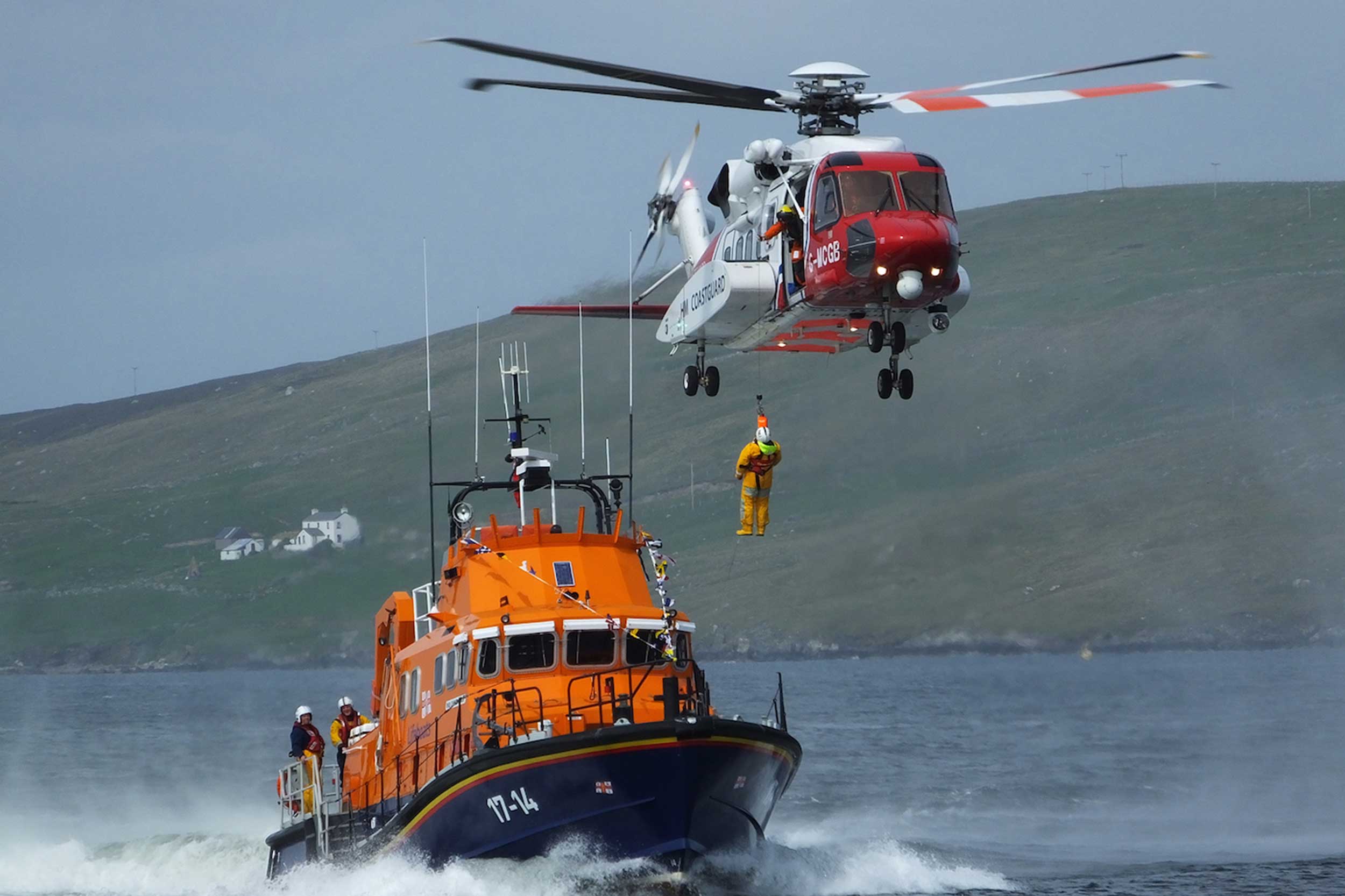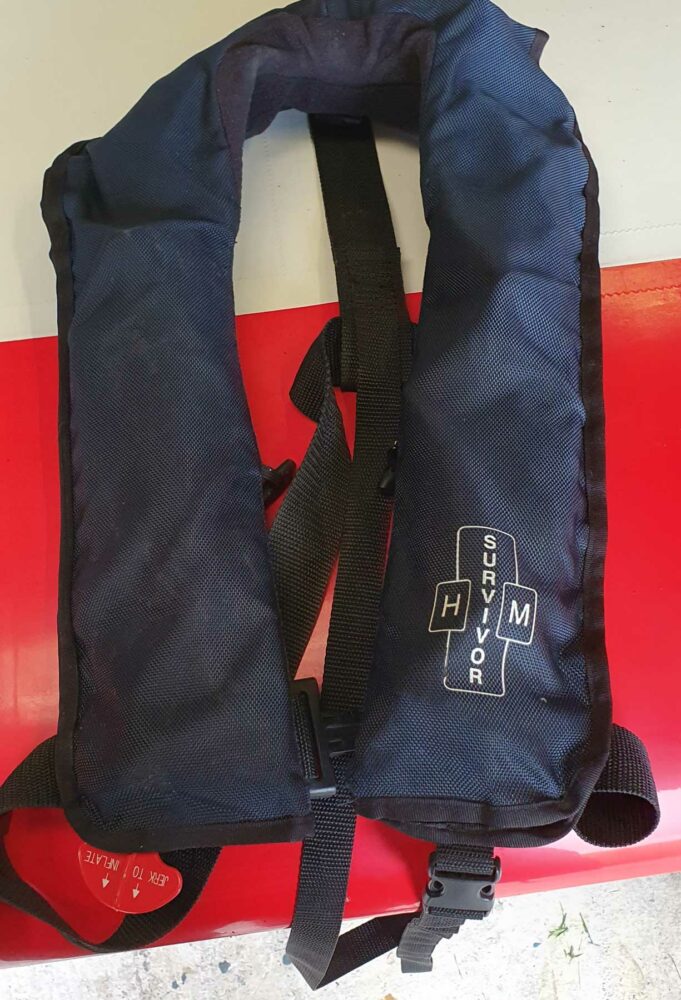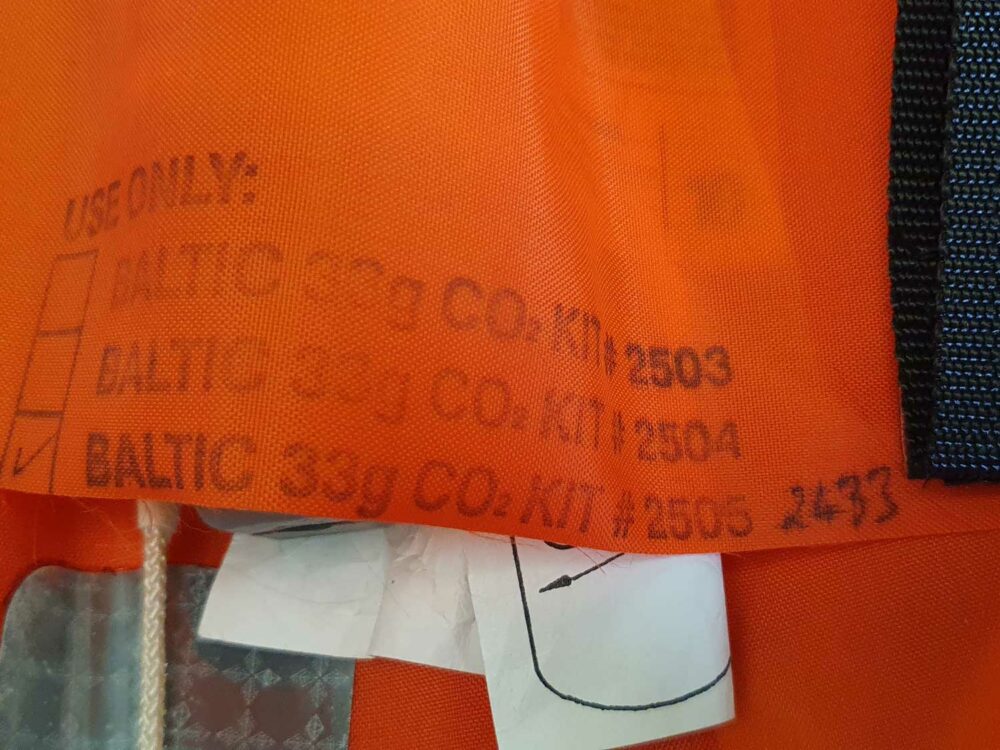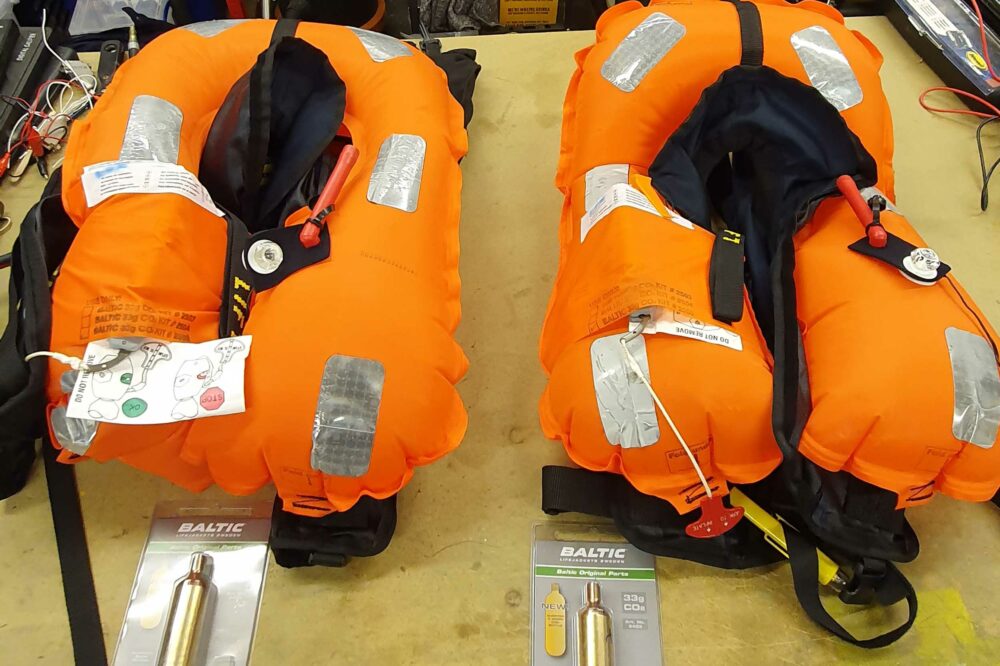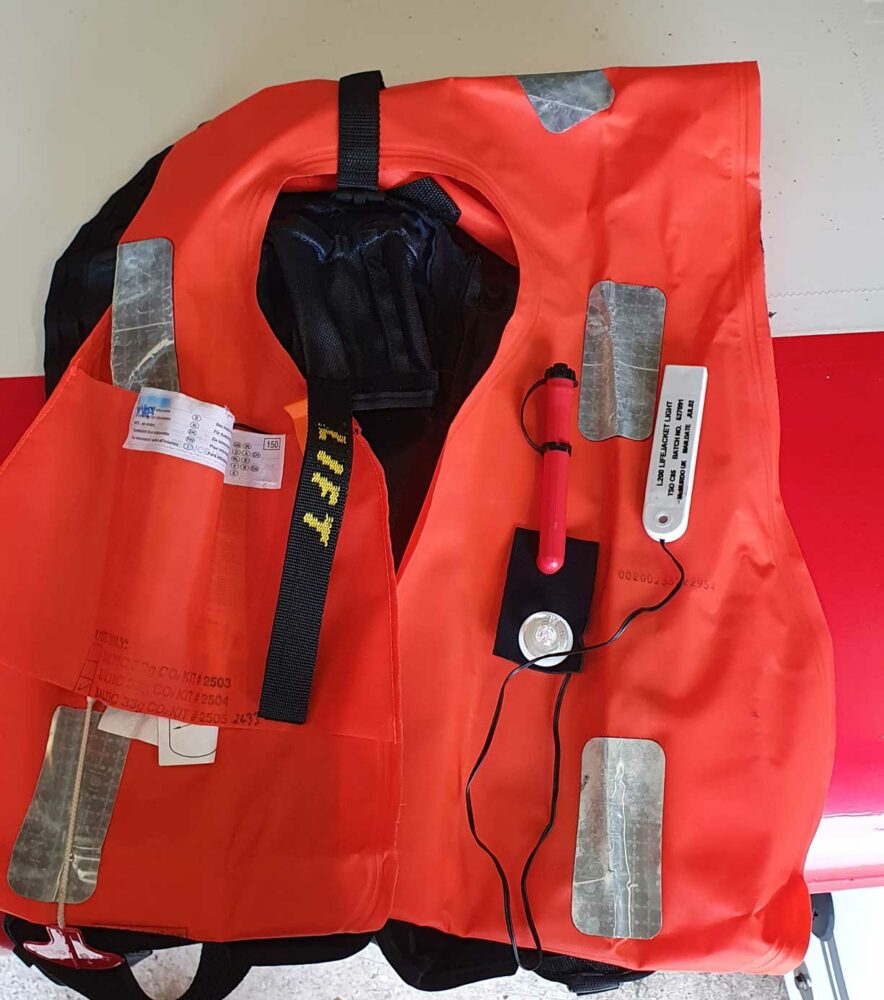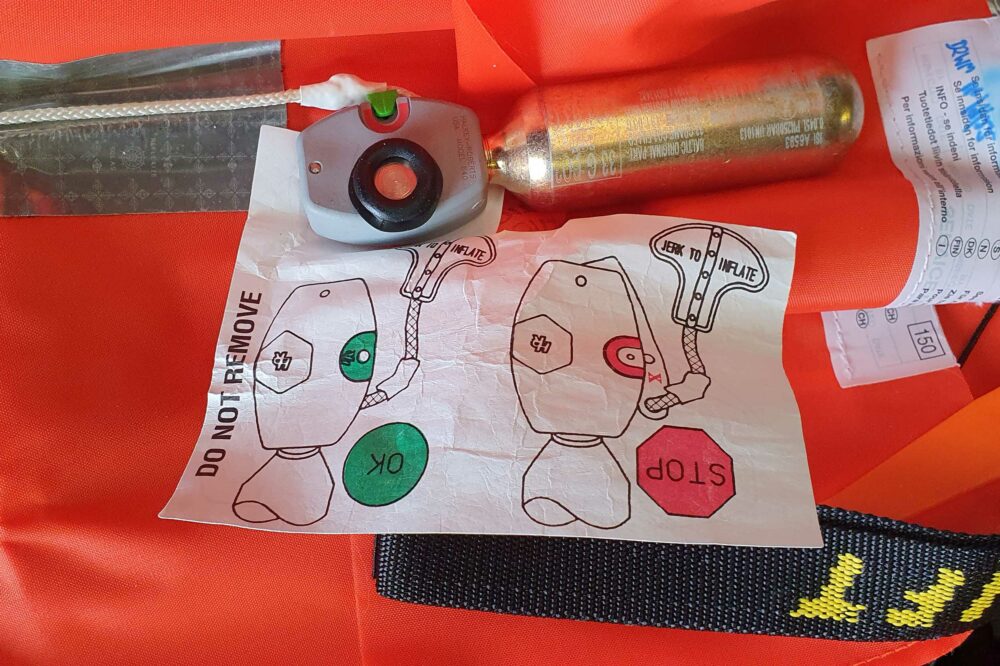While still inflated, give the jacket a good once-over. Check all the seams and attachments as well as the condition of the material, straps and buckles.
As with the Baltic jackets there may well be a loop strap inside the jacket marked ‘LIFT’ or similar. This wants special care as it could be where a SAR helicopter winch operator lifts you out of the water so you want to be confident the stitching is robust!
Confirm that there are no puncture hazards within the cover or on the inflated stole itself.
Check the condition of any ancillaries such as spray hood, reflective patches, whistle and light (including its seawater battery and connections).
Don’t forget to check for corrosion on the cylinder seating and actuation lever.
Any damage found, other than trivial or obviously repairable to a high standard, means it’s probably time to condemn the jacket.
If the jacket passes inspection, deflate it using a blunt device pressed carefully into the oral inflation valve.
Get as much gas out as you can. Aim for zero residual buoyancy – that is, empty!
At this point give the deflated jacket another inspection to ensure nothing was missed when it was bulging with gas.


